15 June

Henry Fitzroy
1536 - Henry VIII sent members of his council, led by Thomas Howard, 3rd Duke of Norfolk, to visit his daughter, the Lady Mary, and bully her into accepting her father as supreme head of the Church in England, and acknowledging that she was not the legitimate heir to the throne.
1547 – Baptism of Peter Bales, calligrapher, schoolmaster and master of micrography, at St Michael Cornhill in London. His micrographical work included a hand-written Bible which could fit into a walnut shell and a ring, which he presented to Elizabeth I, containing a collection of devotional texts. Bales also wrote the copybook “The Writing Schoolemaster”.
1559 – Death of William Somer (Sommers), court fool to Henry VIII, Edward VI and Mary I. Somer had had a narrow escape in July 1535 when Henry VIII threatened to kill him because he praised Catherine of Aragon and Mary, but called Anne Boleyn “ribald” and her daughter, Elizabeth, a “bastard”. Somer's last public appearance seems to have been Elizabeth I's coronation in January 1559. Somer was buried at St Leonard, Shoreditch, London.
1567 – Battle of Carberry Hill, near Edinburgh, between the Protestant nobles and the army of Mary, Queen of Scots and her husband, the Earl of Bothwell. Mary surrendered and was imprisoned. It was the end of her relationship with Bothwell.
1596 – Death of Richard Fletcher, Bishop of London, at his house in Chelsea. He was buried in St Paul's. Fletcher fell out of favour with Elizabeth I and was temporarily suspended of his episcopal duties in 1595 after his marriage, which Elizabeth had warned against.
16 June
 1487 – The Battle of Stoke Field between Henry VII's forces and the Yorkist forces of Lord Lovell and John de la Pole, Earl of Lincoln, who had had pretender Lambert Simnel crowned King Edward VI in Dublin on 24th May 1487. Henry VII was victorious, Lincoln was killed and Lovell fled to Scotland. Simnel was spared by Henry VII, who put him to work in his kitchens. Simnel later became a falconer.
1487 – The Battle of Stoke Field between Henry VII's forces and the Yorkist forces of Lord Lovell and John de la Pole, Earl of Lincoln, who had had pretender Lambert Simnel crowned King Edward VI in Dublin on 24th May 1487. Henry VII was victorious, Lincoln was killed and Lovell fled to Scotland. Simnel was spared by Henry VII, who put him to work in his kitchens. Simnel later became a falconer.
1514 - Birth of Sir John Cheke, Tudor scholar, humanist and administrator, at Cambridge.
1614 – Death of Henry Howard, Earl of Northampton, author, courtier and administrator, at his house in Charing Cross. He died of gangrene after an operation on a tumour on his thigh. Northampton is known for his learning and intelligence, but also for his alleged involvement in the Overbury scandal, the plot that led to the poisoning of Thomas Overbury in the Tower of London. Although it is not known whether Northampton was definitely involved, it was something that affected his posthumous reputation. His niece Frances Howard, Countess of Somerset, and her husband were tried after Northampton's death, and the lawyer for the prosecution claimed that Northampton was involved. Of course, he was not there to defend himself.
17 June
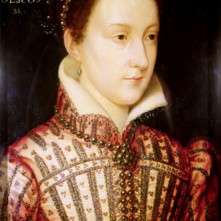
Mary, Queen of Scots
1551 – Death of Sir George Blage, courtier, poet and friend of Sir Thomas Wyatt the Elder, at Stanmore, Middlesex. His offices included Chief Steward and Bailiff of Maidstone, and Comptroller of the Petty Custom of London. He was a reformer and was arrested in July 1546 after he was heard denouncing the mass. Blage was condemned to death but, fortunately, was pardoned by Henry VIII.
1567 – Mary, Queen of Scots was imprisoned at Loch Leven Castle after her surrender to the Protestant nobles at the Battle of Carberry Hill a couple of days earlier. It was there that she is said to have miscarried twins fathered by the Earl of Bothwell. Mary managed to escape in May 1568.
1601 – Death of Gabriel Goodman, Dean of Westminster and founder of Ruthin School, Ruthin, Denbighshire. He was buried in St Benedict's Chapel, Westminster Abbey.
18 June
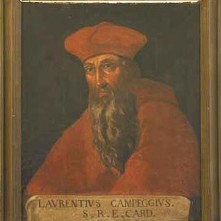
Cardinal Campeggio who presided over the Legatine Court
1546 – Anne Askew was arraigned at London's Guildhall for heresy, along with Nicholas Shaxton, Nicholas White and John Hadlam (Adlams or Adams). She was sentenced to be burned at the stake.
1558 – Proving of the will of Robert Recorde, Welsh mathematician and physician. His date of death is not known, but is thought to have been mid June 1558. He is known for introducing the “equal to” sign, i.e. “=”. He published several mathematical works, including “The Grounde of Artes, teachings the Worke and Practise, of Arithmeticke, both in whole numbers and fractions” in 1543, which was the first book on Algebra published in England, and “The Whetstone of Witte, whiche is the seconde parte of Arithmeteke: containing the extraction of rootes; the cossike practise, with the rule of equation; and the workes of Surde Nombers”, in which he introduced the “=” sign.
1588 – Death of Robert Crowley, Protestant printer, author, poet and Church of England clergyman. He was buried in the chancel of St Giles Cripplegate under the same stone as his great friend martyrologist, John Foxe.
1592 – Death of Francis Wyndham, Judge, at the Committee House, St Peter Mancroft, Norwich. His trials included the treason trials of John Somerville and William Parry in the 1580s, and his legal knowledge led to him being approached for advice on Mary, Queen of Scots.
1616 – Death of Thomas Bilson, Bishop of Winchester, at Westminster. He was buried at Westminster Abbey.
19 June
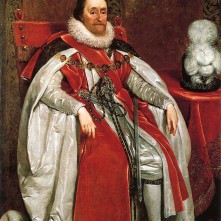
James I of England (VI of Scotland)
1535 - Sebastian Newdigate, William Exmew and Humphrey Middlemore, monks of the Carthusian Order of London Charterhouse, were hanged, drawn and quartered at Tyburn. Their crime: refusing to accept King Henry VIII as the Supreme Head of the Church.
1566 – Birth of James VI and I, King of Scotland, England and Ireland, at Edinburgh Castle in Scotland. James was the only son of Mary, Queen of Scots, and Henry Stuart (Stewart), Lord Darnley. James became James VI of Scotland when his mother was forced to abdicate 24th July 1567, and he became James I of England on the death of Elizabeth I, 24th March 1603.
1573 – Execution of Thomas Woodhouse, Jesuit priest and martyr, at Tyburn. He was the first priest to be executed in Elizabeth I's reign. Woodhouse was beatified in December 1886 by Pope Leo XIII.
1616 – Death of Henry Robinson, Bishop of Carlisle, at his home, Rose Castle in Carlisle. He died of the plague. Robinson was buried in Carlisle Cathedral.
20 June
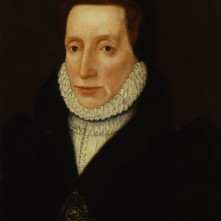
Margaret Douglas
1560 – Death of Francis Hastings, 2nd Earl of Huntingdon, at Ashby-de-la-Zouch. Francis was married to Katherine Pole, daughter of Henry Pole, Baron Montagu, but was fortunate to survive the fall of the Poles in 1538. His son, Henry, was educated with Henry VIII's son, the future Edward VI, who made Hastings a member of his Privy Council in 1550. Hastings and his son were imprisoned in the Tower by Mary I for their support of Lady Jane Grey in 1553, but were pardoned a few months later. He served Edward VI, Mary I and Elizabeth I as Lord Lieutenant of Leicestershire.
1565 – Margaret Douglas sent to the Tower of London by Elizabeth I after the announcement of the betrothal of Mary, Queen of Scots and Lord Darnley, Margaret's son. She was released after Darnley's murder in February 1567.
1567 - The discovery of the Casket Letters. Click here to read more about these letters.
1568 – Death of Armagil Waad (Wade), Chief Clerk of the Privy Council and member of Parliament during Edward VI's reign, at Belsize Park, Hampstead. He was buried in Hampstead Church. Waad lost his office and his seat in Parliament in Mary I's reign.
1584 – Hanging of Dermot O'Hurley, Catholic Archbishop of Carshel and martyr, at Hoggen's Green, just outside Dublin. He had been linked with the Roman Inquisition and was tortured by having his feet out in tin boots and then put in front of a fire. He was beatified 27th September 1992.
1585 – Death of Henry Percy, 8th Earl of Northumberland, on the night of the 20th/21st June in the Tower of London. Northumberland had, allegedly, shot himself through the heart, although it was rumoured that he was murdered by Sir Christopher Hatton on the orders of Elizabeth I's government. Northumberland had been imprisoned in the Tower in January 1584 for his Catholic beliefs and his involvement in plots to do with Mary, Queen of Scots. He was laid to rest in the chapel of St Peter ad Vincula at the Tower.
1595 – Burning of Walter Marsh, spy and Protestant martyr, in Rome's Campo dei Fiori. Before he was burned, he had his hands and tongue cut off. He had been accused of spying on Catholics for Elizabeth I, and of committing offences against Catholics.
21 June
1494 – Birth of George Cavendish, Cardinal Wolsey's Gentleman Usher. Cavendish wrote a biography of Wolsey, “The Life and Death of Cardinal Wolsey”, and a collection of tragic poems, “Metrical Visions”. His poetry and biography are widely used by Tudor historians as primary sources.
1529 – Death of John Skelton, poet, clergyman and former tutor to Henry VIII when he was prince, at Westminster. He was buried in St Margaret's, Westminster. His works included “Garlande of Laurell” and “The Boke of Phyllyp Sparowe”.
1553 – Letters patent issued changing Edward VI's heir from his half-sister, Mary, to Lady Jane Grey.
1596 – Death of Sir John Wingfield, soldier. He was shot in the head after being wounded in the thigh, and being unable to walk, in the attack on Cadiz. He was buried in the Cathedral at Cadiz.
1612 – Death of James Elphinstone, 1st Lord Balmerino, administrator and Judge, at Balmerino. Elphinstone was James VI's secretary of state, but was attainted as a traitor and sentenced to death in 1609 after he tricked the King into signing a letter to the Pope. He escaped death, but was imprisoned until 1609.

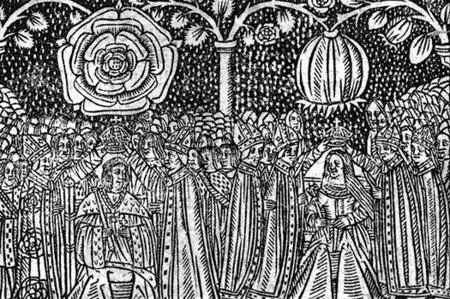
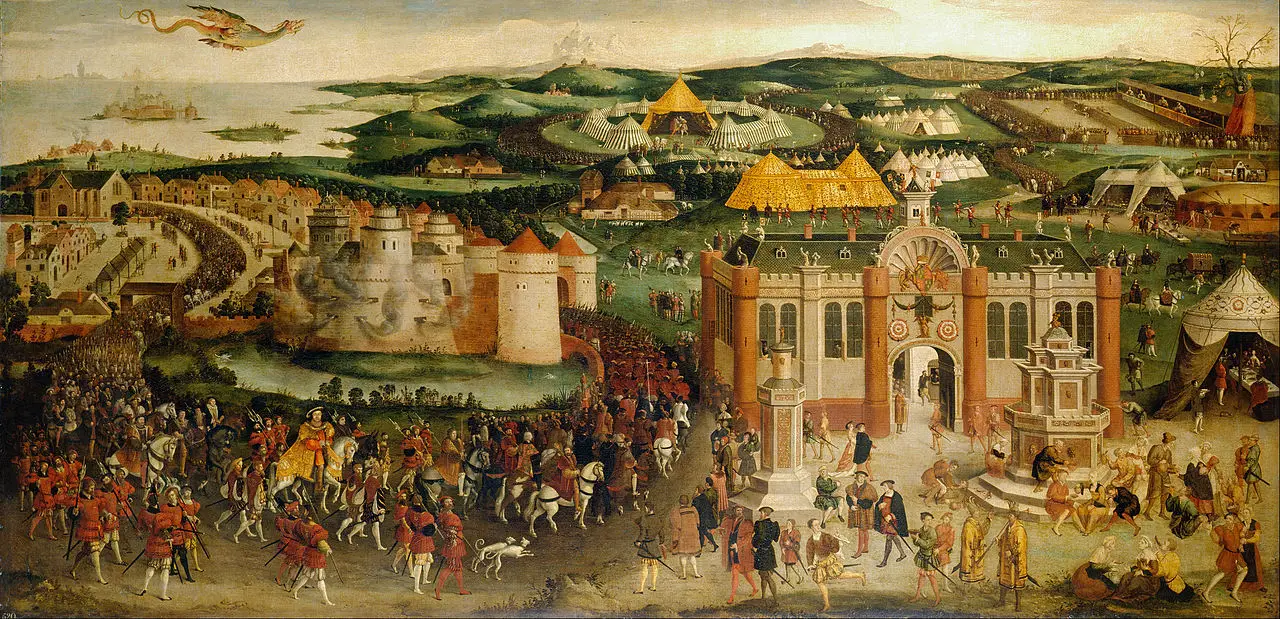
Leave a Reply